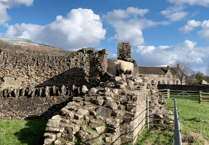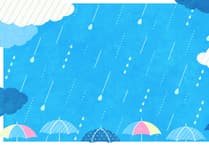Bonding and creating a relationship of trust with your new puppy or dog is crucial and one of the best ways to do this is to play with them!
Play is a great way to help your dog to learn and have fun at the same time. Remember that your new puppy is exploring the world and all new things are fun, think about the leaf that blows in the wind or the butterfly that floats by your pup in the summer, your pup has that inquisitive childlike quality, and everything might be an opportunity to play and learn new things and have fun!
It’s really exciting to get to know your new puppy or dog and what ‘floats their boat’ when it comes to play styles. Let’s take a closer look at these styles:
1/ The chase and retrieve- dog is happy to chase and fetch a ball or toy and bring it back to play with you.
2/ The Slow stalk and then a pounce and shake and dissect (i.e., dog shakes the toy and sometimes rips it up!)
3/ The tugger-playing tug of war with a tug toy or rope toy, shaking from side to side.
4/The seeker and searcher-dog likes to play hide and seek or find and sniff out people/toys/
treats
5/ The chaser or being chased -dog likes to play chase with human/another dog OR likes to be chased and will instigate this.
All the play styles will have some element of the inherited prey drive from our dogs’ ancestors from many thousands of years ago. For our dogs’ ancestors, the sequence of; see, hear, or smell prey/stalk/chase/bite/hold/kill/dissect/eat/ was vital for survival. With domestication, the genetic ‘prey drive’ has been reduced in our present-day dogs and genetically our dogs have a watered-down version of the sequence.
Obviously, some breeds over time have had specific parts of the sequence bred to the humans’ advantage, think Border Collie with the eye/stalk when rounding up sheep or a gun dog that will chase and fetch a pheasant without consuming it.
So, when your dog has his soft toy that squeaks and he takes immense pleasure in shaking it and dissecting and shredding it, you now know that he is performing one aspect of what was a part of a predatory sequence!
So, getting back to your own dog, explore with him what toys or games are fun for him. Sometimes the type of game we might think our dog might like to play may not be that appealing to our dog, if they are not engaging with you with a tuggy toy, experiment with something different, like a squeaky toy, catch the ball, find the treat in the grass or hide and seek. Play needs to be something you can do together and have fun with, that’s where the bonding and trust starts to build between you. Your dog will think, ‘hey this human gets me!’ Always remember that if you do play fetch, it has to be for a short period of time as you don’t want to put too much pressure on your dog’s joints with repetitive ball throwing.
Factor in a few short sessions in the day with your dog that you will both enjoy, and you can incorporate a few sits/downs/stays or recalls with the reward of getting to squeak the squeaky toy or shake the fluffy toy. Having fun with you while playing will cement learning and make your dog look forward to being with you and doing training.
So, what do my dogs like? Well, Kilo my older kelpie cross has a quieter but enriched life now she is older and has arthritis, but when younger she used to like to play chase with me, love to play find the treats and liked shaking a soft toy from side to side and would chase down a toy or ball. Tiny Timmy loves to chase a ball and bring it back and loves a tuggy game with a soft tug toy, either with me or parading it around the garden! Both dogs are very ‘foody’ so mind toys and enrichment ideas with food are a win too!
With all play sessions, I always recommend giving a clear ‘all done’ or ‘finished’ when you have finished and end by giving your dog a tasty treat in exchange for the toy. That way you are giving your dog clear information that the session has ended. I will do a scatter of treats in the grass when we finish the play session as sniffing will bring your dogs’ level of arousal back down and help them to calm down. I would also recommend that you teach a solid ‘drop’ or ‘give’ with your dog so that toys can be given in exchange for a treat. Also teach them a ‘take it’ cue when you re-engage them with a toy/ball.
Playing with your dog has huge benefits, it’s bonding time together, it’s fun learning time, it’s physically and mentally stimulating, and you are teaching new skills like impulse control.
What games are you going to play with your dog and continue to create that bond and connection?!




